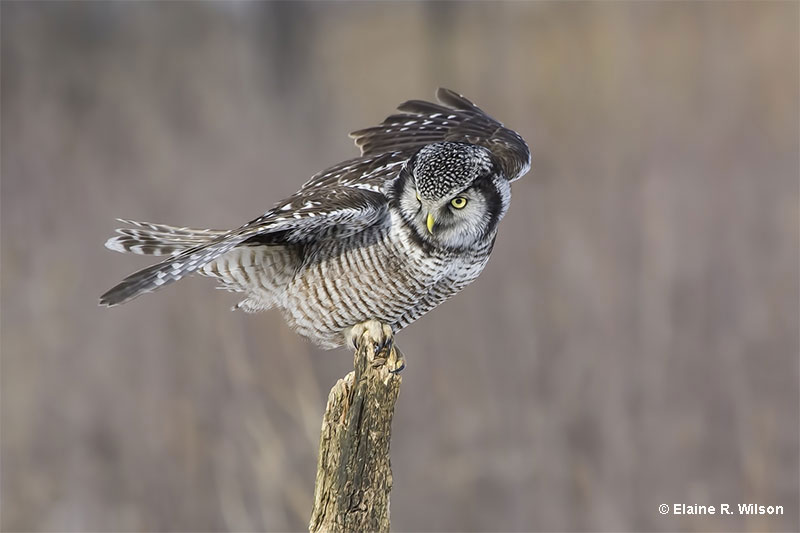When we look at birds, we don’t see ears. It can be easy to wonder if they hear at all. However, birds sing to each other and react to sound. The fact of the matter is that birds do have ears and they also hear very well. They just don’t have ears like we do.
Instead of ears sticking out of the sides of their heads, bird ears are like those of a lizard. They have a round opening on each side of the head, nearly as big as their eyes, protected by soft, barbless feathers. On most birds, feathers cover and hide their ears.
However, if we look at Emus or other birds with naked heads, we can see those small, round openings. They are behind the eyes, on the back part of the face.
How Do Birds Hear?
Like people, birds have middle and inner ear structures that capture sound waves and help interpret them. They hear many of the same sound frequencies that we do but humans tend to have a wider sound frequency range than birds.
This might seem surprising, especially when so many birders are unable to hear the high-pitched, 8,000 to 10,000 Hz songs of kinglets and Blackpoll Warblers.
However, not hearing those species or other sounds above 8,000 Hz is usually caused by natural, age-related hearing loss. Younger birders hear Blackpoll Warblers and Brown Creepers with ease.

On average, people have a hearing range of 20 to 20,000 Hz, while most birds sing from 1,000 to 8,000 Hz. Even so, a few birds sing much lower, and some higher than these parameters. The Dwarf Curassow sings a very low-pitched, booming song of just 23 Hz.
On the other end of the spectrum, the Rufous-faced Warbler of eastern China has been recorded singing incredibly high harmonics of 54,000 Hz!
Birds can also hear exceptionally well. They hear sounds at quite a distance, Great Gray Owls can detect mice making sounds underneath the snow, and Barn Owls hear and catch rats in the dark. The head and facial structure of these species and other birds help them locate the source of a sound.
The Importance of Moving Their Heads
While watching birds, we often see a heron cock its head to one side, or a hawk move its head back and forth. If we are lucky enough to watch an owl in action, we might see it maneuver its head up and down and back and forth. All of these head movements are related to hearing and help birds know where a sound is coming from.
In the case of these and other birds, those head movements help them locate prey. Likewise, head movements are also used to locate predators, know where rivals are singing, and find fledglings begging for food.
The structure of a bird’s head and how the feathers are arranged on the head and face can help channel sound waves to its ears. Each ear also hears slightly different frequencies than the other.

When a bird moves it head back and forth, it is using these adaptations to get a much more accurate picture of where the sound is coming from.
Such movements are especially important for owls that catch their food in low light conditions. Like other birds, owls move their heads to locate the source of a sound.
However, they are much better at zeroing in on the sound than other birds. In part, this ability stems from listening with two “different” ears.
Most nocturnal owl species have asymmetrical ears whereby one ear is located slightly lower on the side of the head than the other. This results in sounds being heard in one ear slightly before being heard in the other ear.
Combined with facial and feather structures in the shape of a shallow dish, the slight difference in timing helps owls hear and locate the minute scratching and scurrying of rodents in the dark, and under snow.
Bird Ear Structure

On the outside, bird ears look like small, round openings on each side of the head. They are on the side of the head, and behind the eyes, and lack the external ear structures that people and other mammals have. Their ears are protected by specialized, soft feathers and, like people, also have middle and inner ear structures.
The structures of their middle and inner ears are more like those of reptiles than people. While humans and birds have eardrums and a cochlea, people have ossicles (tiny ear bones), and the shape of the cochlea differs.
There are other anatomical differences but these organs in birds and people detect and interpret sound in similar ways.
Frequently Asked Questions
How can birds hear without ears?
Birds have ears. They are just hard to see because bird ears lack an external structure, and are usually hidden beneath feathers.
What are birds’ ears called?
Bird ears don’t have a special name. They are just called ears.
Are there ears for birds?
Birds have ears on each side of the head, just behind the eyes. They are small, round openings usually concealed by feathers.
Have all birds got ears?
All bird species have ears, although they are covered with feathers.
Do birds hate noise?
Most birds do not like loud noise. However, some birds living in urban areas have become accustomed to city noise and sing louder songs to compensate for it.
Are any birds deaf?
There aren’t any deaf birds and it doesn’t seem that birds can lose their hearing.



